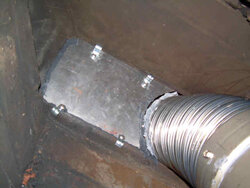I recently had an Osburn 1600 insert installed in an exterior chimney with a full SS liner. The manual doesn't call for the use of a block-off plate and when I asked the installer about putting one in, he said it wasn't needed and the stove may draft better without it. I have since read several posts on this forum about block-off plates and I was wondering if people think it would be a good idea to install one? And if the consensus is that I should put one in, are there any reccomendations on types/brands/stores? I would be looking to buy one as opposed to fabricating my own.
As always, thanks for all the great advice.
As always, thanks for all the great advice.


